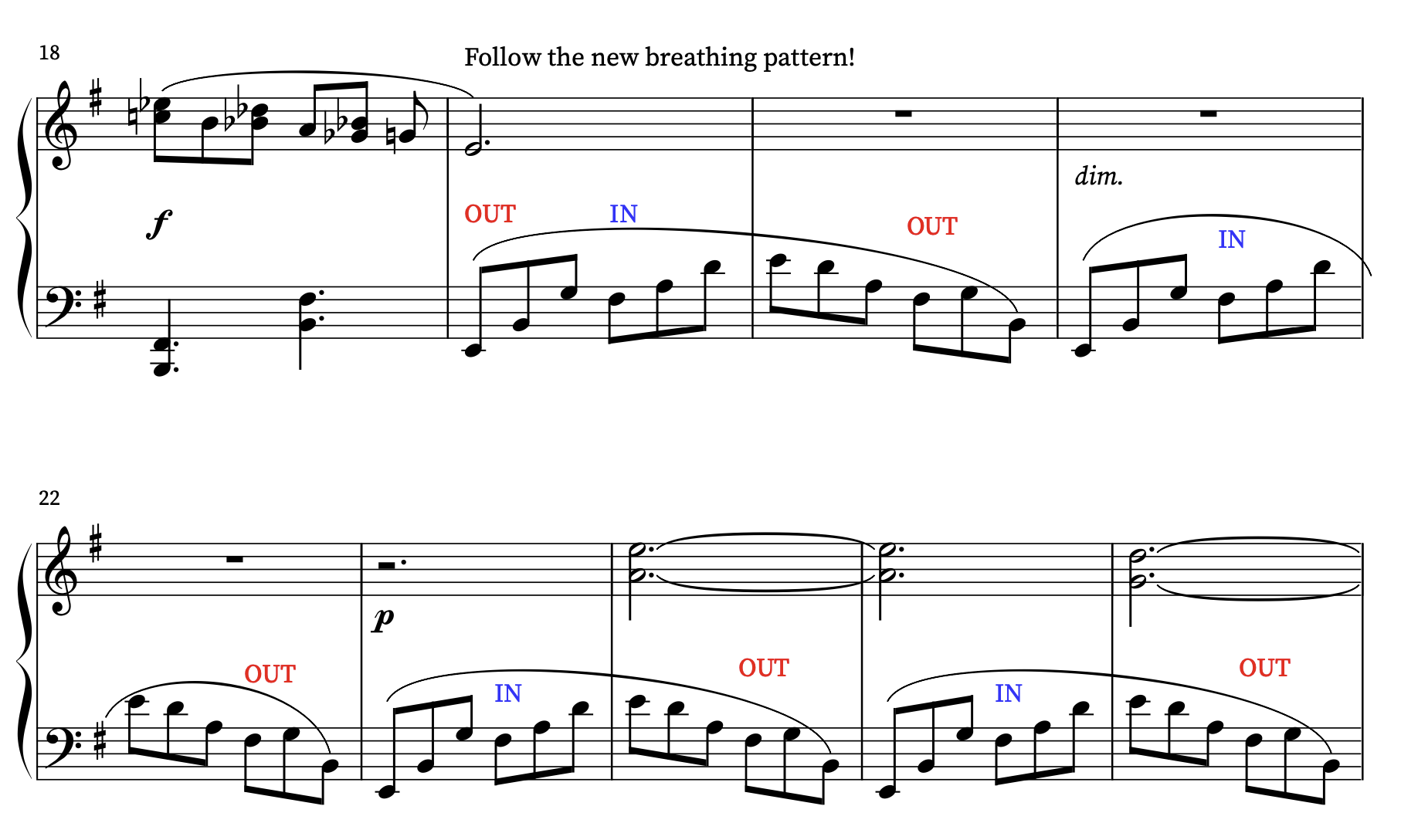Fostering Fluidity: Breathing Workshop
These lessons could be done in any order you choose, although the order suggested below is optimal. These have the potential to induce a state of deep relaxation, and this may not be appropriate or comfortable for all people. Please stop the recording if you need to and reach out if you need support!
Part 1: To Weld the Breath
This lesson explores the many places that the breath can go in the body. While this lesson is about the breath, it also has major implications in terms of posture since the lungs and surrounding muscles play a major role in keeping us upright. Students reported that their movements felt more fluid after this class. This lesson is 47 minutes in length.
Part 2: Breathing Rhythmically
This lesson explores the timing of the four parts of the breath (inhale, hold, exhale, hold) in coordination with a simple movement of rolling the forearm and hand on the floor. Experimentation with the timing of the breath improves the players ability to maintain a consistent breathing pattern throughout a piece and this experience can be a game changer for musicians who have a tendency to hold the breath. This lesson is 1 hour 3 minutes in length.
Part 3: Attending to the Breath
This lesson works with sustaining attention on breath, pulse, and simple movement. Musicians must attend to a massive amount of sensory information while playing while also keeping track of their intellectual understanding of the score and expressive details. This lesson challenges the student to maintain sustained attention on the breath and pulse, while following increasingly difficult movement instructions. This process aims to improve awareness of the mind and body while playing, granting the musician the ability to be fully present in each moment. This lesson is 29 minutes in length.
Six Rhythmic Breathing Etudes
The Six Rhythmic Breathing Etudes are an exploration of the rhythm and pace of breath in playing. These pieces include an introduction with instructions, a copy of the score with suggested breathing patterns, questions for reflection, and a Feldenkrais Awareness Through Movement® lesson on rhythmic breathing. The learning intention is to expand awareness of the breath during playing. It is often difficult to attend to the many details of the music as well as our breath, and this process aims to bridge that gap, reuniting the mind and body for optimal performance.
Bonus: Breathing Rhythmically Version 2
This alternate recording of “Breathing Rhythmically” was created to go with the Six Rhythmic Breathing Etudes curriculum


